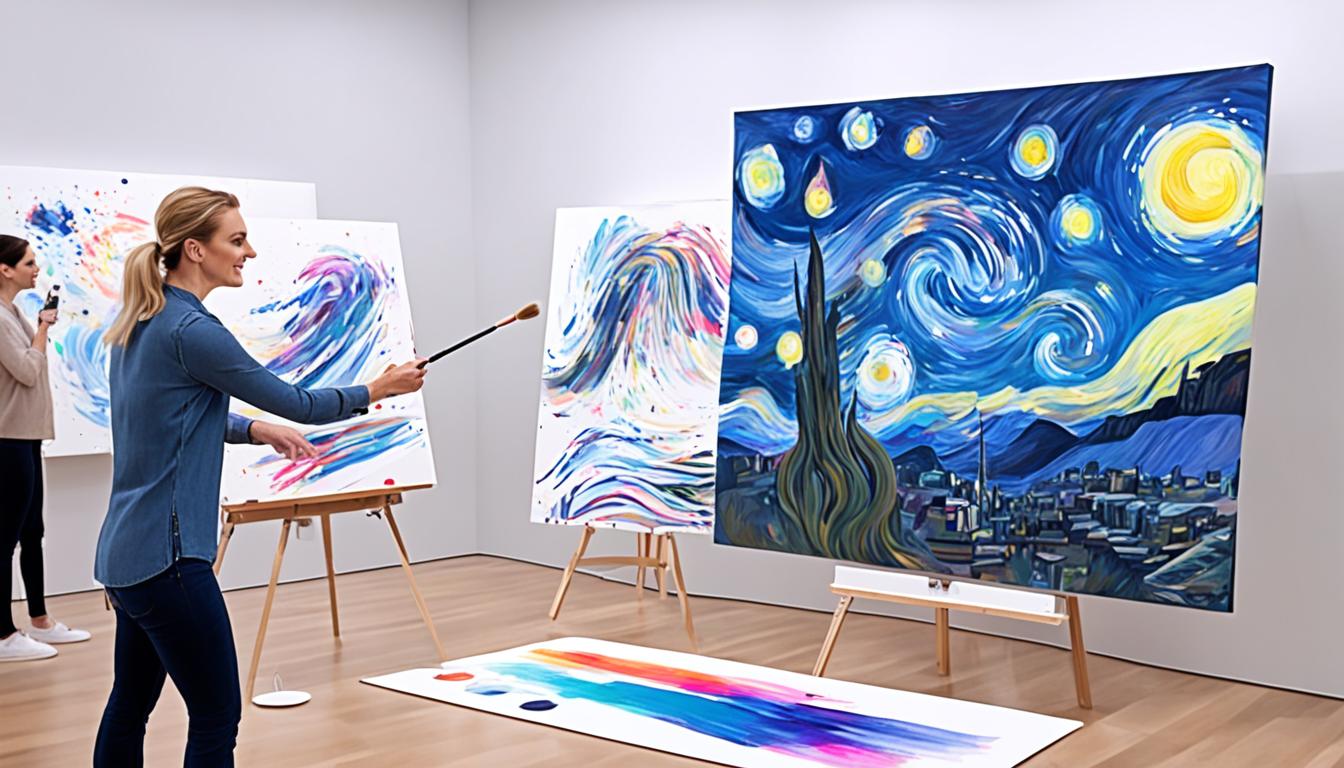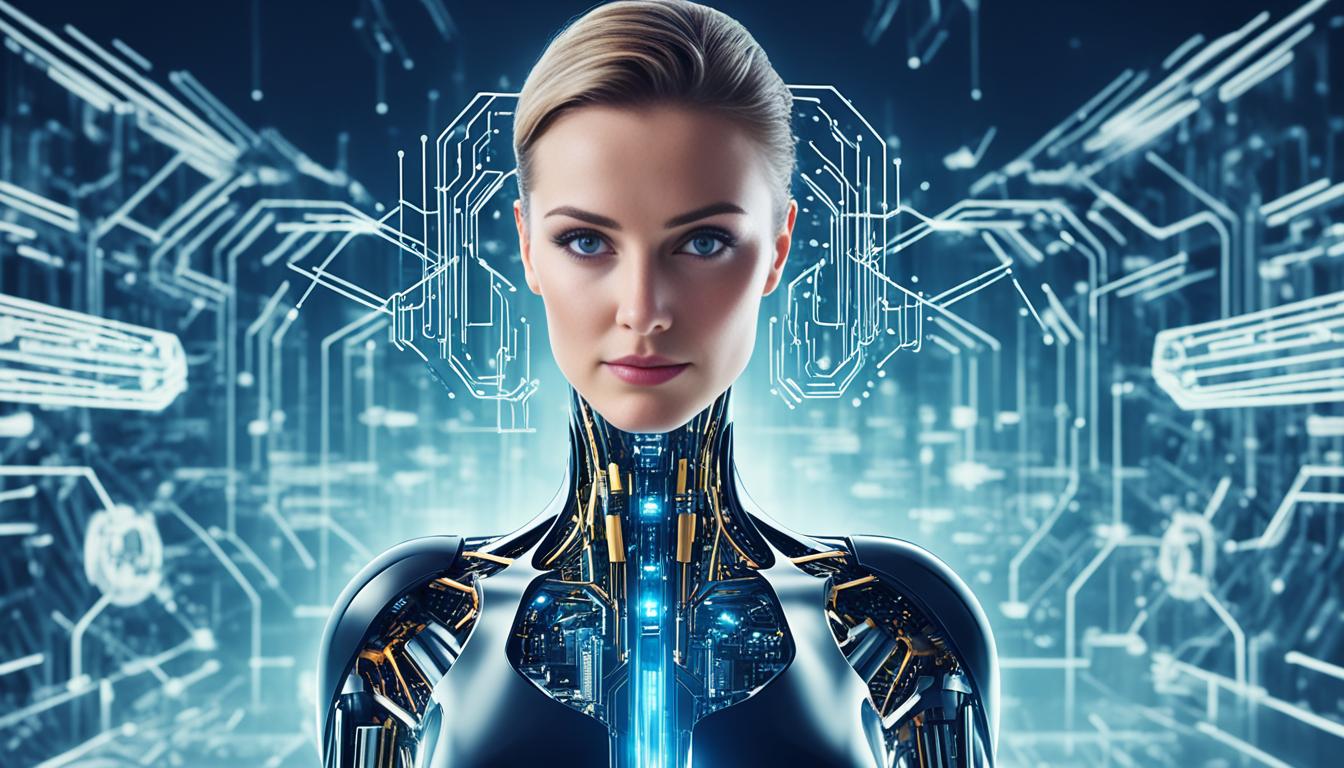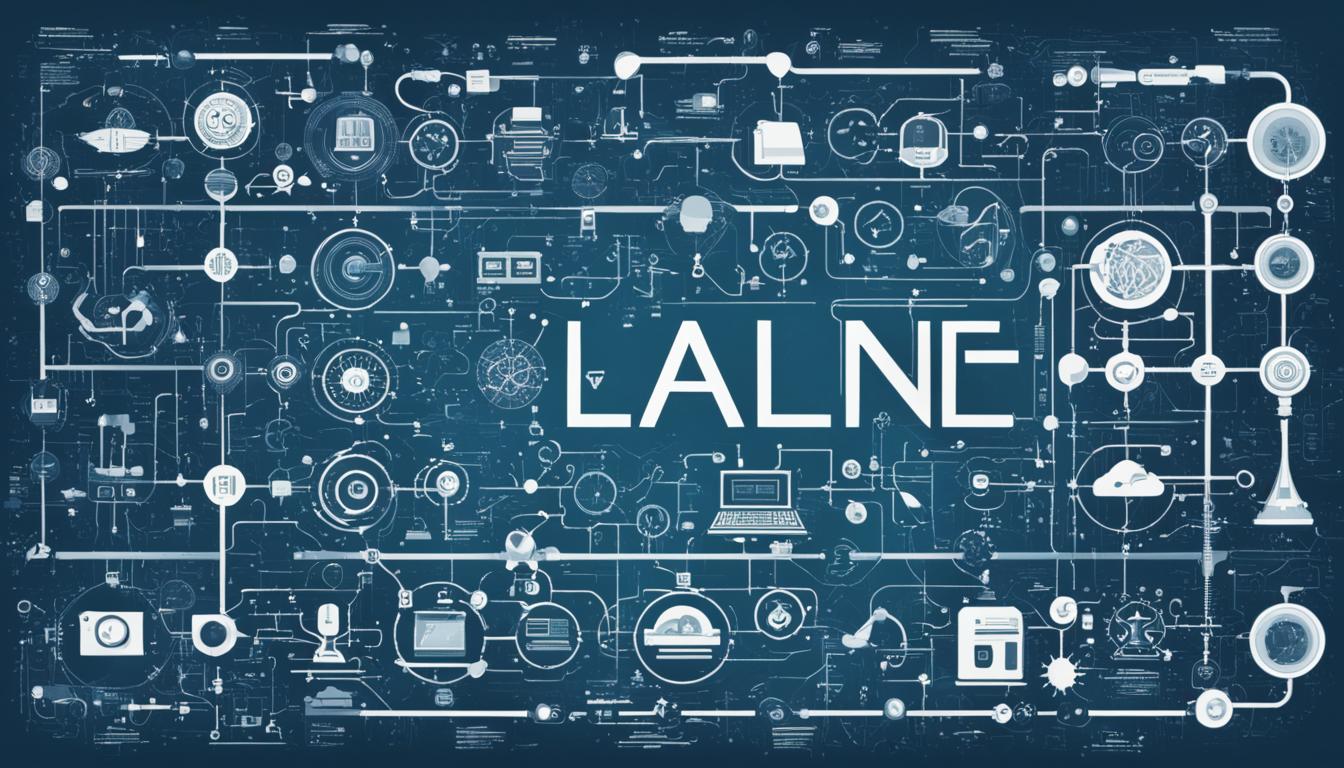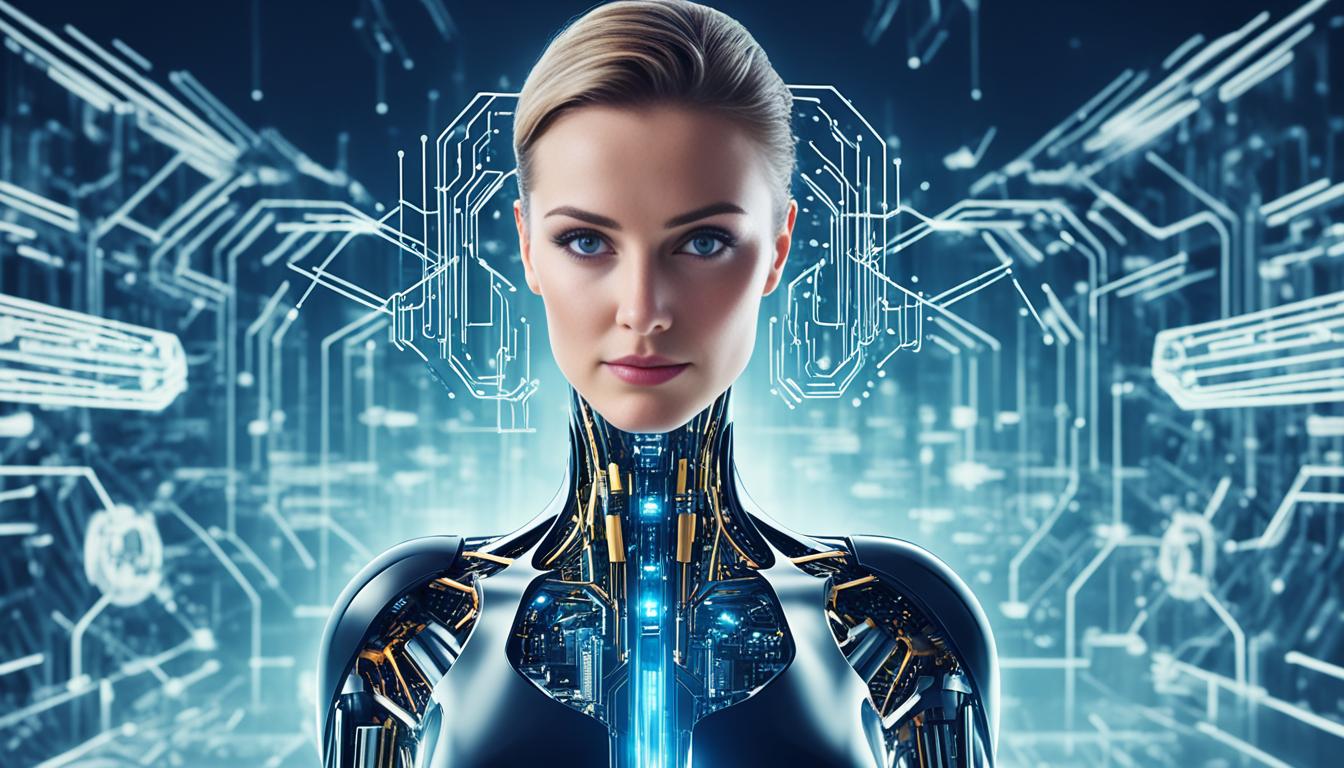A big change is happening in the art world, thanks to artificial intelligence (AI). AI is changing how we make and see art. It’s making new kinds of art and changing how we mix different styles together.
This article looks at how AI is changing creativity. It’s making art more accessible to everyone. We’ll see how AI is used in art, design, and music. It’s making traditional art better and bringing new ideas to the table.
We’re going to explore how AI is changing the art world. We’ll talk about what it means for artists and the art world. Join us to see how AI and creativity are working together to shape the future of art.
Key Takeaways
- AI is changing the art world with new ways to express creativity, like generative art and style transfer.
- Computational creativity is a new field that looks at how AI can make the creative process better.
- AI tools are used to make designs, personalize creative work, and make art more accessible to everyone.
- Combining AI and human creativity leads to more creativity, better efficiency, and could change the art and design industries.
- The future of AI in creativity is full of new and exciting changes in the arts and beyond.
Understanding Computational Creativity
At the crossroads of technology and art, computational creativity shines. It’s about how computers can be creative like humans, challenging the idea that only humans can be creative. As AI-powered creativity grows, we’re seeing more how artificial intelligence (AI) helps in making things creative.
Defining Computational Creativity
Computational creativity is all about making software that can come up with new, useful, and surprising ideas. It’s not just about helping humans or doing tasks automatically. It’s about machines being creative on their own. Researchers are working hard to make machines think differently, make new connections, and create original art, music, or poetry.
The Role of AI in Creative Processes
AI in creative processes has changed the game in art and design. AI can make beautiful images, compose music, and even write stories. By using machine learning and neural networks, computers can look at lots of data, find patterns, and make something completely new. This has made people think a lot about what it means to be creative and if machines can be creative too.
The world of computational creativity is always changing. The mix of human and machine creativity is something we’re still exploring and talking about. Some people are unsure about AI’s creative abilities, but AI-powered creativity has definitely changed how we think about and interact with creativity.
Applications of AI in Art
The world of art is changing fast, thanks to AI. Generative art and style transfer are two key areas where AI is making a big impact. They’re changing how we make and see art.
Generative Art
Generative art uses AI and algorithms to make unique and beautiful art. Tools like DeepDream and RunwayML let artists try new things. They create AI-generated art that goes beyond what we’ve seen before.
This kind of art lets artists explore new styles and find new ways to be creative.
Style Transfer
Style transfer is another way AI is changing art. It mixes the styles of two images together. This lets artists blend different looks easily, making AI-powered art that’s truly unique.
Style transfer is changing how artists work. It lets them try new things and be more creative than ever before.
Enhancing Artistic Processes with AI
The world of art is changing fast, thanks to AI-assisted art and AI-powered tools for artists. These technologies are changing how artists work and making their art more interesting.
Platforms like Adobe Sensei automate boring tasks. This lets artists focus more on the creative parts of their work. AI helps artists be more efficient and creative, letting them try new things.
AI helps artists with tasks like picking colors, changing images, and making 3D models. This means artists can spend more time on their art and try new ideas. They don’t get stuck with too much work.
AI has made making art easier, faster, and more innovative. Artists can now do more with less time and effort. The mix of human creativity and AI is making art more exciting and beautiful.
AI in Creativity: The Impact on Design
AI is changing more than just fine art. It’s also changing the design world. Now, AI can make new design ideas from what you give it and what it knows. This makes design available to more people, including those who aren’t designers.
Design Generation
AI tools can make unique designs by looking at patterns, styles, and what users like. They can make many design parts, like logos and color schemes. This helps designers try out more ideas quickly.
This makes designing faster and more fun. It lets designers be more creative and try new things.
Personalized Design
AI also makes designs that feel just right for each person. It uses what it knows about users to make things fit their tastes. This makes users more engaged and connected to the design.
As AI gets better, its effect on design will get bigger. AI in design, design generation, and personalized design are changing how we see, make, and experience things. They’re opening up new ways to be creative and innovative.
The Benefits of AI in Art and Design
AI is changing the creative world, bringing big benefits. It helps with enhanced creativity and makes things more efficient. Artists and designers are finding new ways to work thanks to AI.
Enhanced Creativity
AI helps artists and designers be more creative. It lets them try new things and come up with fresh ideas. With AI, they can use lots of digital tools to add new elements to their work.
This makes their art more diverse and interesting.
Efficiency and Productivity
AI also makes things more efficient for creatives. It automates tasks like color grading and 3D modeling. This means artists and designers can spend more time on the creative parts of their work.
They can finish projects faster and take on bigger challenges. This leads to a more rewarding creative process.
AI helps not just individual creatives but also the art world as a whole. It makes high-quality tools more accessible and affordable. This opens up opportunities for more people to be creative.
Democratization of Creativity
AI has changed the game in art and design, bringing us into a new era. Now, more people can make professional-quality art and designs. Thanks to AI-powered creativity tools and platforms, making art is no longer just for experts.
These tools have made art and design more accessible to everyone. People without formal training can now use AI to bring their ideas to life. This means the line between professional and amateur art is getting fuzzy. It’s opening up new ways for people to be creative and innovative.
AI has given power to individuals and made the creative world more diverse. It’s breaking down barriers, letting new voices be heard. This shift is creating a more vibrant and inclusive place for creativity to thrive. With AI, everyone can tap into their creative side and share their unique stories.
Computational Creativity in Music
Artificial intelligence (AI) has changed music in big ways. It now helps us make, play, and improvise music. AI music composition has grown from simple ideas to complex methods. These methods can make music that feels real and full of emotion.
AI uses special algorithms to mimic human music. This has started a new chapter in AI music performance and improvisation.
Composing Music with AI
AI can now make music that sounds like different styles and genres. It looks at lots of music to learn what makes it tick. Then, it uses this knowledge to create new songs.
This means AI can make music that’s just as good as what humans do. It shows how powerful AI can be in music.
AI in Music Performance and Improvisation
AI has also changed how we perform music. It can make music sound like it’s being played by a human. This makes performances almost indistinguishable from those of great musicians.
AI can even improvise, making music on the spot. This opens up new possibilities in music.
Computational creativity in music is always getting better. The mix of human and machine creativity is changing music. It’s opening up new ways for artists to express themselves.
AI in Art
The world of art has changed a lot with AI-generated art and machine learning in art. Artists and creators are now exploring new areas with AI art. They are pushing the limits of what’s possible in art.
AI algorithms are now used to make unique and interesting artworks. They learn from a huge database of art. This lets them copy the styles and techniques of different artists. This creates a new kind of art that mixes technology’s precision with human creativity.
Using AI in art has started debates about its value and if it’s real art. Some think AI art doesn’t have the same emotional depth as art made by humans. Others see it as a new way to express art. But, AI can work with human artists to create something new.
The mix of AI-generated art, AI art, and machine learning in art is always changing. This means the possibilities for art are endless. The future of art will surely include AI technology. This will bring new and exciting art innovations.
The Future of AI-Driven Creativity
The future of AI-driven creativity is looking bright. AI will get better at making art and understanding human feelings. This means we’ll see art that really speaks to us, showing deep human emotions.
AI will make making art easier for everyone, from pros to hobbyists. It will help by offering smart suggestions for colors, textures, and designs. This will make the creative process smoother and more exciting.
As AI gets better, the difference between human and machine-made art will fade. This will change how we see creativity. AI will not just copy human art but also create new and exciting things. It will mix human ideas with AI’s power to make art that amazes us.
Embracing the Synergy of AI and Human Creativity
The art and design world is changing fast. Working together, AI and human creativity can do amazing things. It’s key to understand how they can work together as we look to the future of creative AI. AI has already changed how we make art and design, but we must value both the machine and human sides of creativity.
AI has made making art and design faster, more efficient, and sparked new ideas. AI and human creativity can work together well, with AI adding to the human touch. Collaboration between AI and artists has brought new ideas, making art and design more exciting. Looking ahead, finding the right balance is crucial for AI and human creativity to grow together.
By working together, we open up new ways to be creative, improve the art process, and lead to big breakthroughs. The future of creativity is about combining human smarts with AI’s power. This creates a world where anything is possible.
Conclusion
The journey into how AI changes creativity has been exciting and groundbreaking. This article showed how AI is changing art, making artists, designers, and musicians do more. It’s making new kinds of art and helping with the creative process.
AI is not just a tool; it’s a partner that opens up new creative possibilities. By working together, humans and AI can make art better, work faster, and make creativity available to more people. The future of AI in creativity is bright, promising a balance between human skills and AI’s power.
In short, AI is changing the future of art and design. It’s making creativity mix in new ways, changing how we see art and design. We should welcome this change and work together to use AI’s power to its fullest in creativity.





